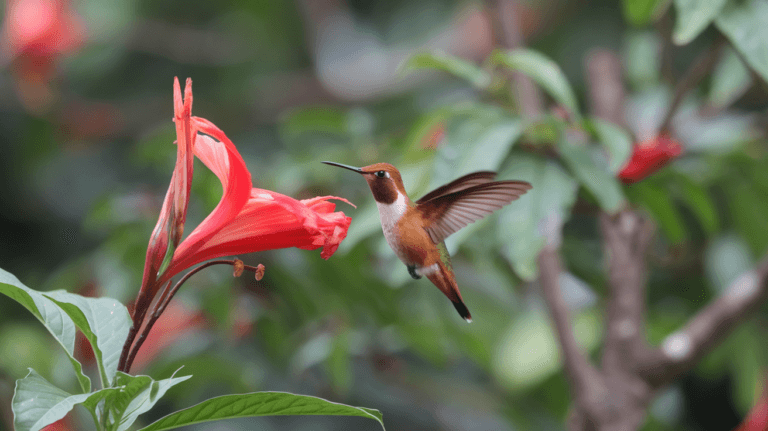24 Popular Backyard Birds In New Hampshire (With Pictures!)
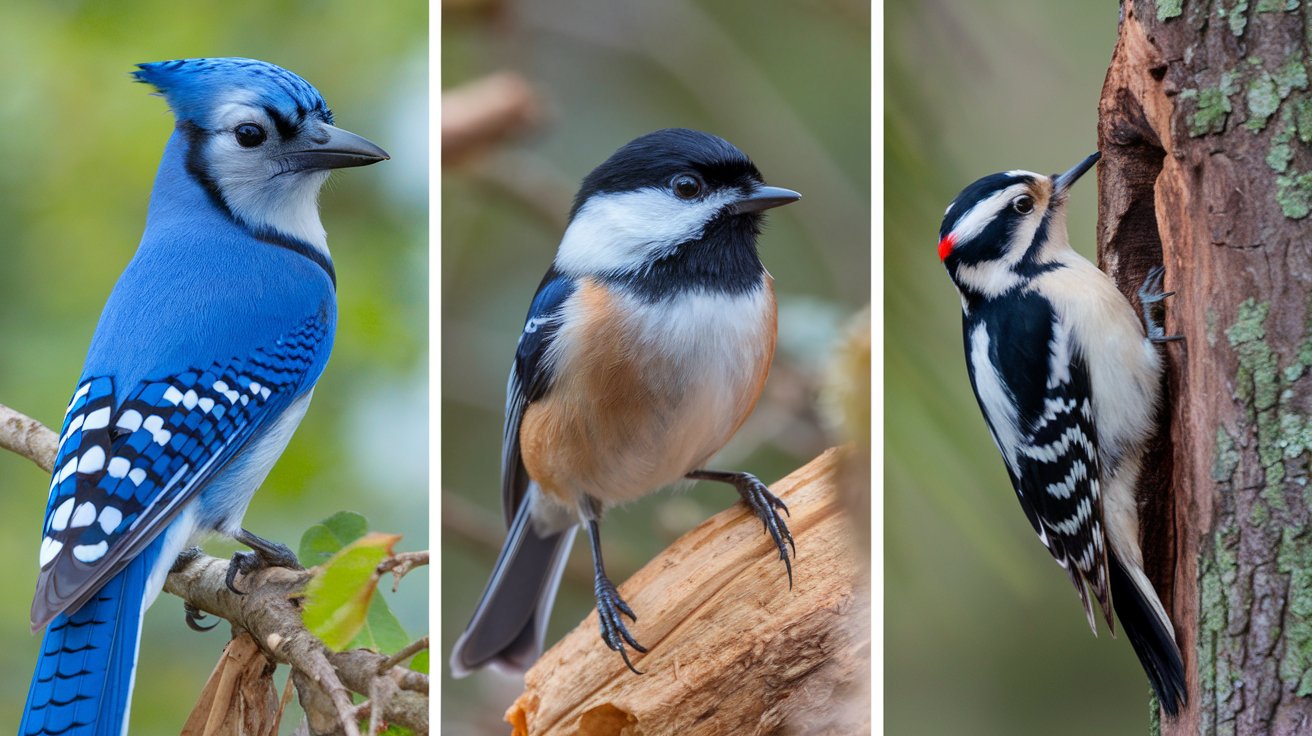
New Hampshire is a haven for bird enthusiasts, with over 425 bird species documented across the state, including more than 200 that can be spotted in backyards.
From vibrant cardinals to cheerful chickadees, these birds bring life and color to outdoor spaces year-round. While the diversity is impressive, this article will focus on the 24 most popular backyard birds in New Hampshire, offering insights into their unique characteristics and behaviors.
Whether you’re a seasoned birdwatcher or a curious beginner, these species are sure to captivate your attention.
Jump to a Section
- 1) Northern Cardinal
- 2) Blue Jay
- 3) American Crow
- 4) Downy Woodpecker
- 5) Tufted Titmouse
- 6) House Finch
- 7) Dark-Eyed Junco
- 8) Red-Bellied Woodpecker
- 9) White-Breasted Nuthatch
- 10) American Goldfinch
- 11) Common Grackle
- 12) Carolina Wren
- 13) Baltimore Oriole
- 14) Song Sparrow
- 15) Purple Finch
- 16) Scarlet Tanager
- 17) Black Cap Chickadee
- 18) American Robin
- 19) Eastern Bluebird
- 20) Spruce Grouse
- 21) Eastern Phoebe
- 22) Ring-Necked Pheasant
- 23) Northern Lapwing
- 24) Killdeer
1) Northern Cardinal
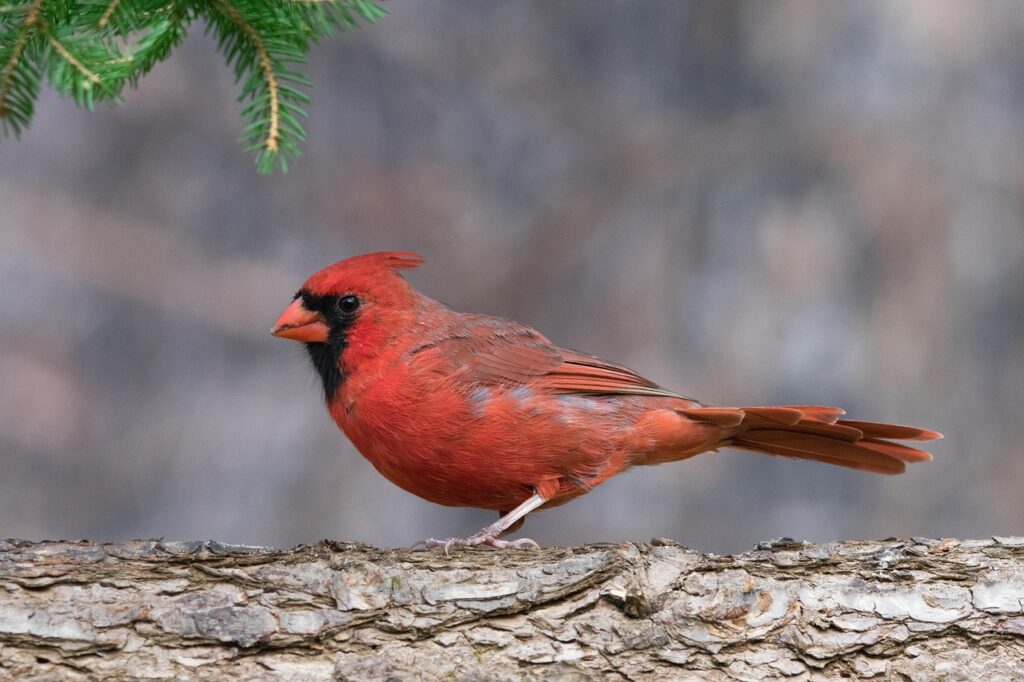
The Northern Cardinal is a vibrant and charismatic presence in New Hampshire’s backyards.
You’ll likely spot them south of the White Mountains, where they thrive in forest edges and shrubby areas.
Cardinals aren’t picky eaters, enjoying a diet of seeds, fruits, and insects.
Despite not relying on feeders, their brilliant plumage and melodic songs make them a welcome sight in any garden.
2) Blue Jay
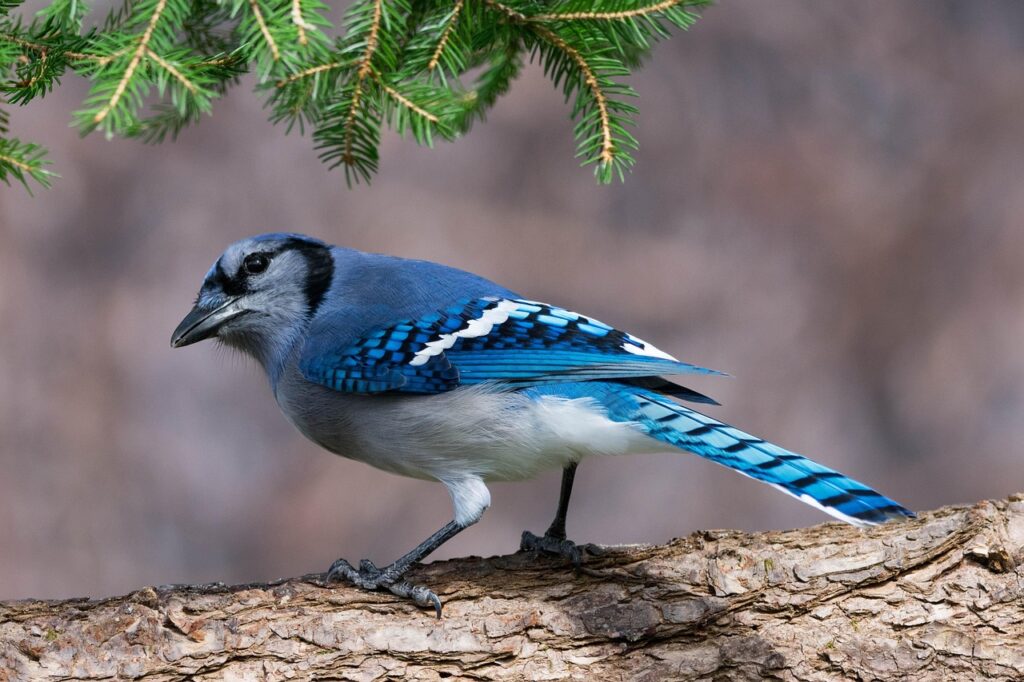
Spotting a Blue Jay in your New Hampshire backyard is always a delight. With its striking blue upperparts, black eyeline, and sturdy black bill, this bird is hard to miss.
You’ll often find them in deciduous forests or residential areas. Blue Jays are omnivorous and love peanuts, sunflower seeds, and suet.
Their loud calls and territorial behavior make them fascinating to observe.
3) American Crow
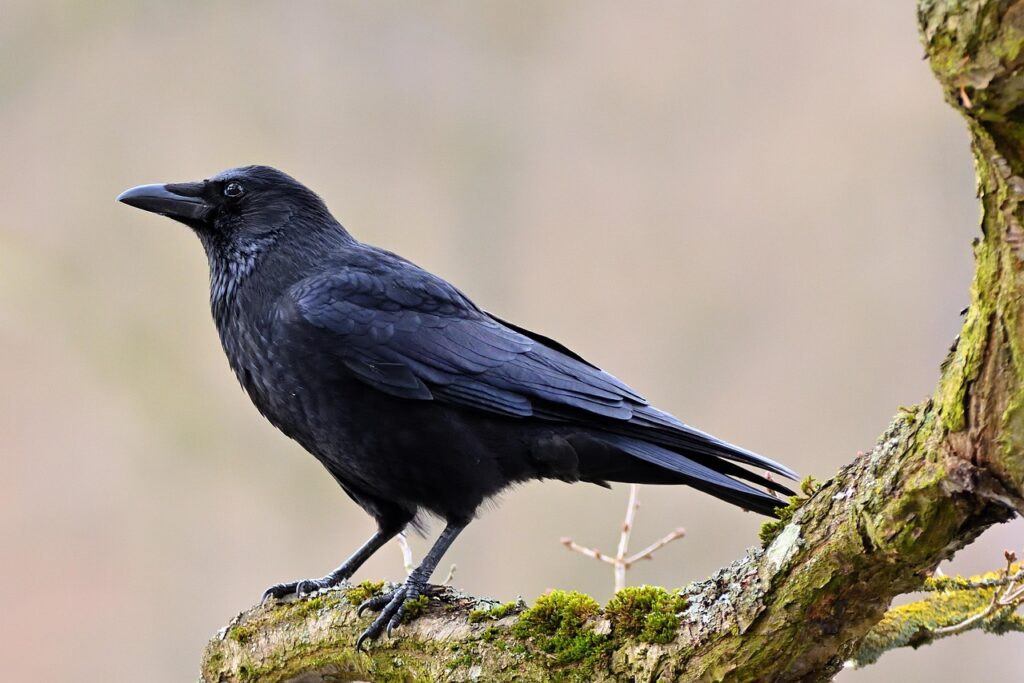
The American Crow is one of the most recognizable birds in New Hampshire backyards, thanks to its glossy black feathers and loud, cawing calls.
They often travel in groups and can be seen foraging on the ground, scavenging food scraps, or raiding bird feeders.
Crows have a strong presence year-round, especially in open fields, suburban areas, and wood edges.
You’re most likely to spot American Crows during the day, especially in the early morning or just before dusk when they gather in large numbers. In winter, they often roost in massive communal flocks.
4) Downy Woodpecker
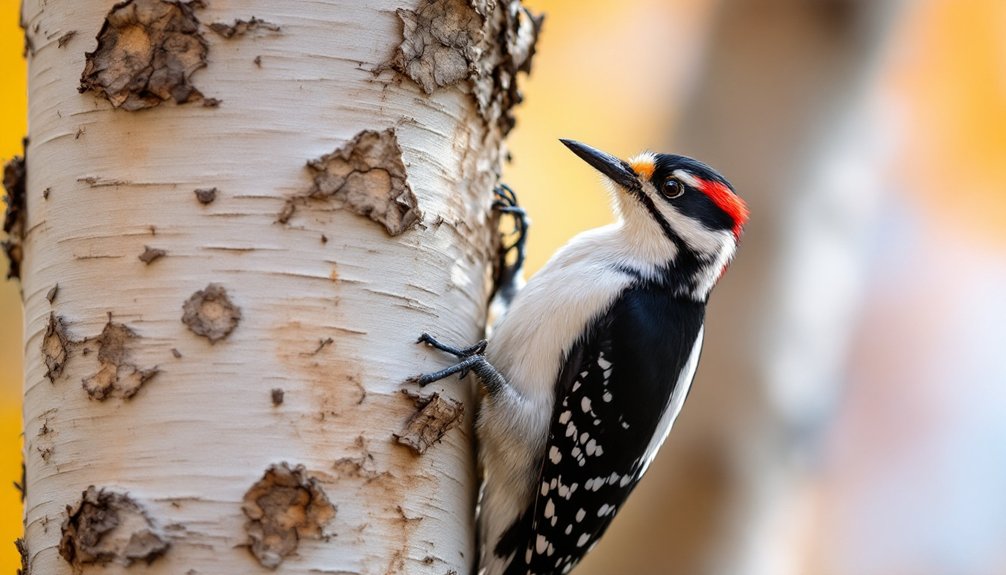
Small but mighty, the Downy Woodpecker is a frequent visitor to New Hampshire feeders, especially during the colder months.
Easily identified by its black-and-white checkered wings and a small red patch on the back of the males’ heads, this tiny woodpecker is about the size of a sparrow.
It prefers wooded areas and loves suet, sunflower seeds, and peanuts, making it a welcome guest in well-stocked backyard feeders.
Downy Woodpeckers can be spotted year-round, often climbing up tree trunks or hanging upside down on branches as they search for insects. They’re most active in the morning and late afternoon.
5) Tufted Titmouse

The Tufted Titmouse, a charming and easily recognizable bird, has become a frequent visitor to New Hampshire backyards.
You can identify it by its small size, around six inches long, and its distinctive gray and white plumage, accented with a perky crest and rusty sides.
With rounded wings and a square-tipped tail, it confidently forages in mixed flocks, showcasing its bold and social nature.
6) House Finch
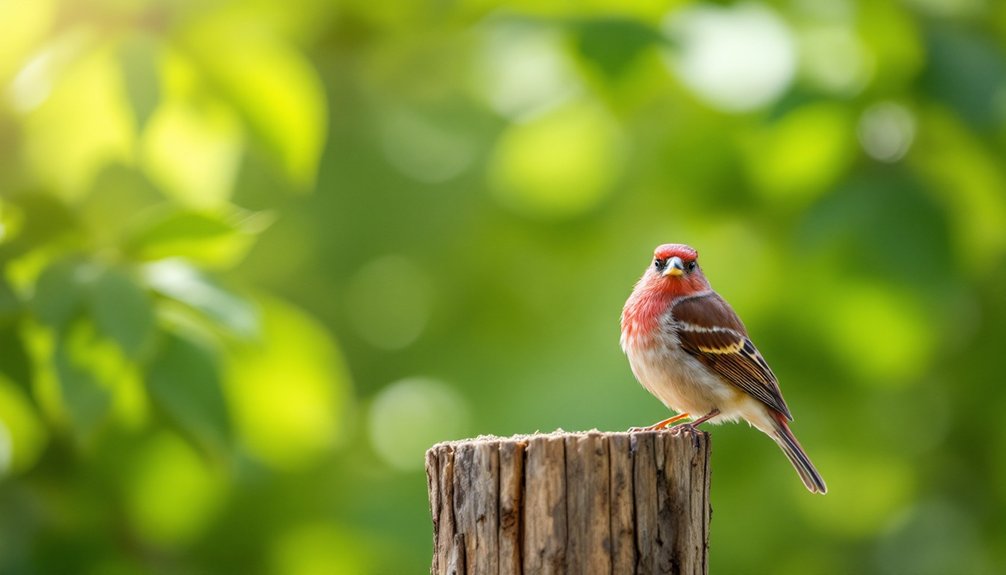
Often spotted in New Hampshire‘s suburban and urban areas, the House Finch is a common sight in backyards.
Originally from the West, these finches expanded eastward, reaching New Hampshire by the late 1960s. They nest in various locations like trees and human-made structures.
Feeding mainly on seeds, they can cause damage to fruit trees. Despite challenges from disease, they thrive in developed environments.
7) Dark-Eyed Junco
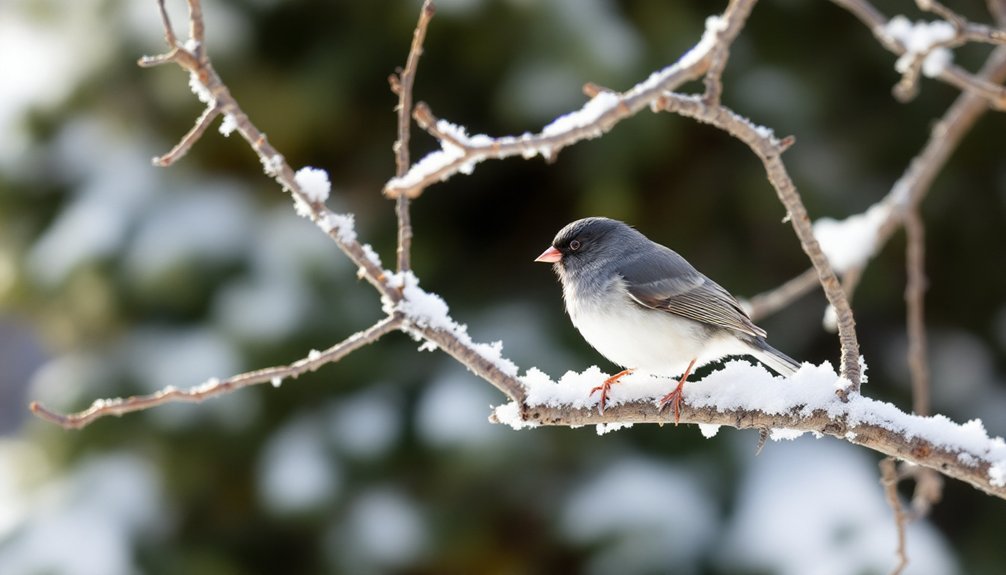
When winter’s chill sets in, you might notice the Dark-eyed Junco flitting around your backyard, adding a splash of activity to the snowy landscape.
These small birds, 5-6 inches long, boast a striking gray and white plumage with conspicuous white outer tail feathers. Males display a uniform slate gray, while females may have hints of brown.
Juncos forage on the ground, eating seeds and insects.
8) Red-Bellied Woodpecker

Despite its name, the Red-Bellied Woodpecker’s red cap is more noticeable than its subtle reddish belly. This medium-sized woodpecker sports a striking black-and-white barred back and is a common sight in southern and central New Hampshire.
Males have a red crown that runs from bill to nape, while females show red only on the back of the head. They enjoy suet, fruit, and nuts and will often visit feeders in winter.
You’re likely to spot the Red-Bellied Woodpecker year-round, especially in mature woodlands or well-treed suburban yards.
9) White-Breasted Nuthatch
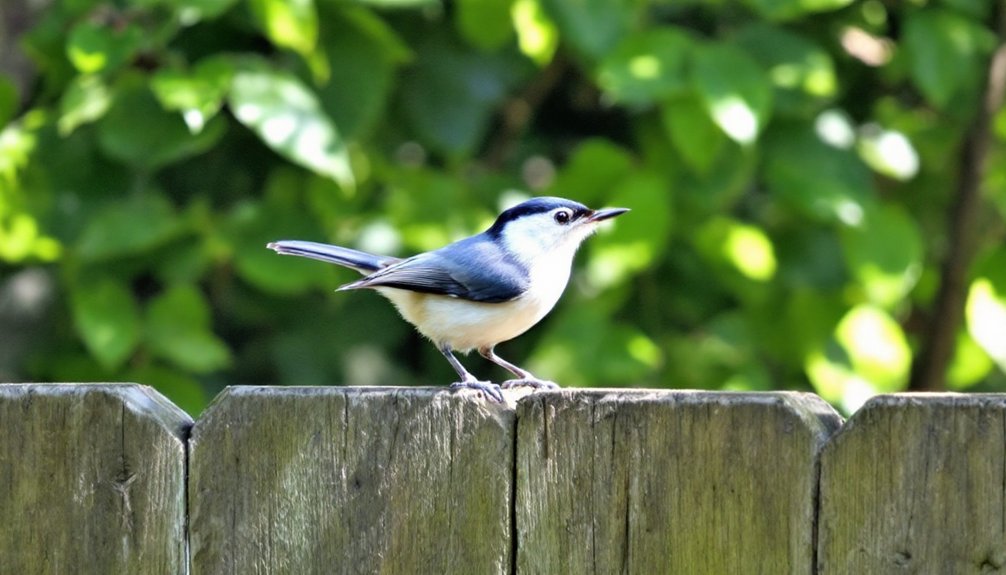
The White-Breasted Nuthatch is a small bird with a clean white face and underparts, a blue-gray back, and a black cap.
This agile little bird is often seen creeping headfirst down tree trunks—a unique behavior that helps it spot insects missed by other birds. They’re commonly found in deciduous forests and backyards with large trees.
White-Breasted Nuthatches are active year-round in New Hampshire and are frequent feeder visitors, especially fond of sunflower seeds, suet, and peanuts. Early morning and late afternoon are the best times to spot them.
10) American Goldfinch

Bright and cheerful, the American Goldfinch is a familiar sight in New Hampshire, gracing backyards and open fields year-round.
You’ll notice their vibrant yellow plumage in summer, while winter renders them a modest gray-brown.
They’re seed lovers, flocking to feeders for thistle and nyjer seeds.
Listen for their distinctive “po-ta-to chip” call, and watch their bouncy flight pattern as they travel in flocks.
11) Common Grackle
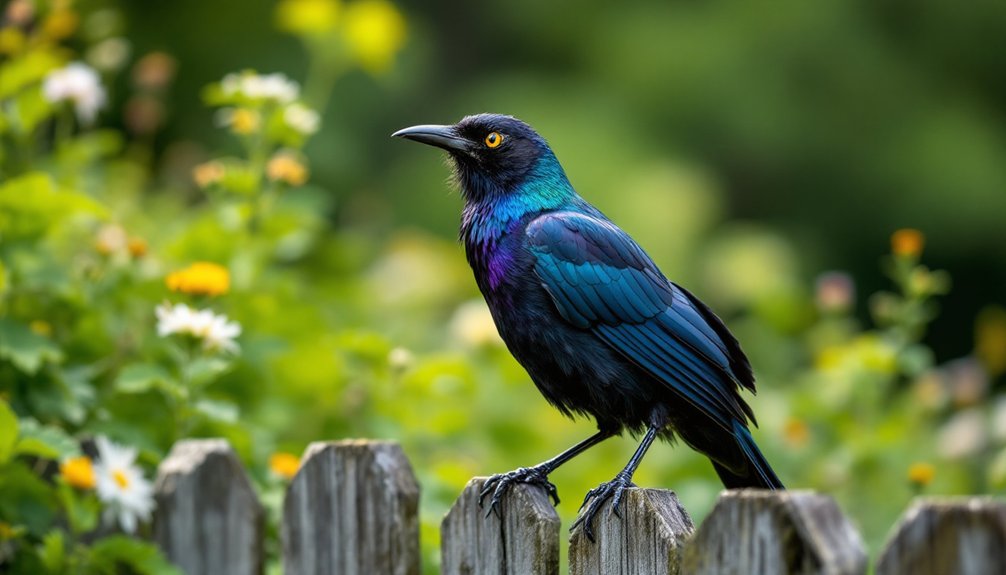
The Common Grackle is a bold, glossy blackbird with an iridescent sheen that can show hints of blue, green, or purple in the right light.
With its long keel-shaped tail and piercing yellow eyes, this bird stands out in any backyard flock.
Grackles are social birds often seen in large groups, especially in open areas, lawns, and near feeders where they enjoy grains, seeds, and scraps.
In New Hampshire, Common Grackles return in early spring and are most commonly seen from March through October, though a few may linger into winter. They’re active during the day and often dominate feeders with their assertive behavior.
12) Carolina Wren

The Carolina Wren is a small, energetic bird with a big voice and a rich, tea-kettle-like song that rings out even on the coldest days.
Carolina Wrens are year-round residents in the southern parts of New Hampshire and are gradually expanding their range northward. They’re most active during the day, often popping up unexpectedly to sing from a fencepost or windowsill.
These wrens favor yards with dense cover and will readily visit feeders stocked with suet, mealworms, and peanut butter blends—especially during harsh winter months.
13) Baltimore Oriole
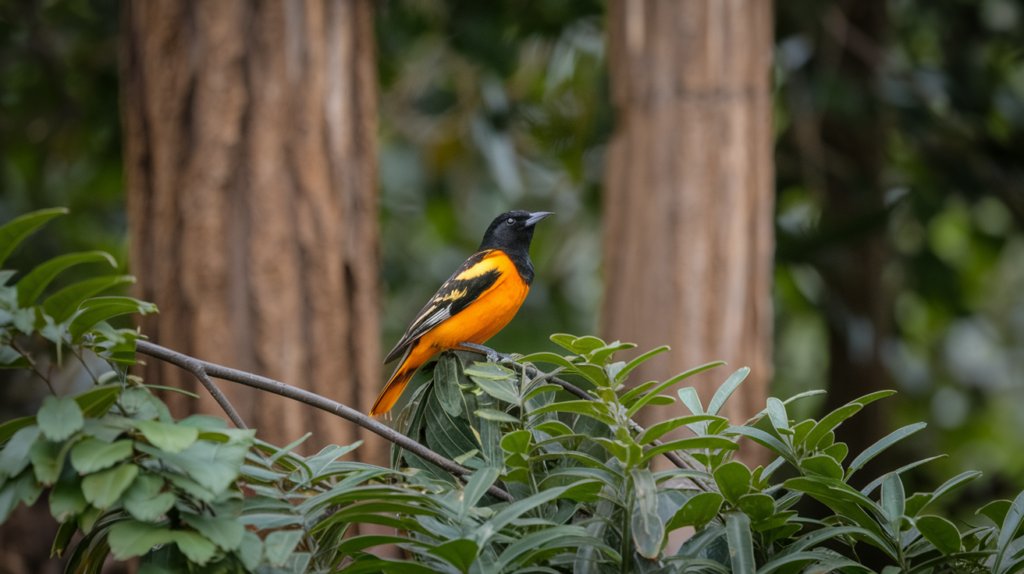
The Baltimore Oriole is a vibrant burst of orange and black that signals the arrival of late spring in New Hampshire.
These songbirds love high tree canopies but will visit backyards with fruit offerings, especially orange halves and grape jelly.
Orioles typically arrive in New Hampshire in early May and stay through late summer. They often nest in tall deciduous trees, weaving beautiful hanging pouches.
If you want to attract them, set out fruit near blossoming trees and be ready to welcome one of the state’s most colorful visitors.
14) Song Sparrow
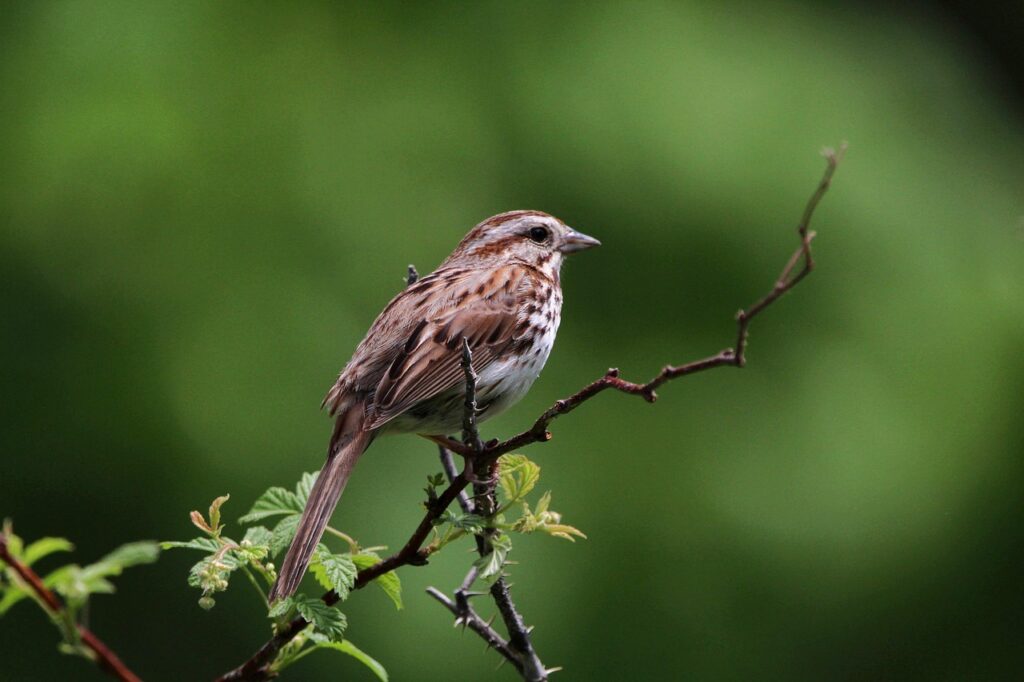
The Song Sparrow is a familiar sight in New Hampshire yards, recognized by its streaky brown feathers and distinctive dark central chest spot.
Song Sparrows are year-round residents in many parts of New Hampshire, though they become especially vocal and widespread in spring and summer.
They prefer brushy edges, gardens, and thickets, and will happily forage under feeders for seeds. Watch for them during early morning and late afternoon as they hop along the ground or burst into song from a low perch.
15) Purple Finch
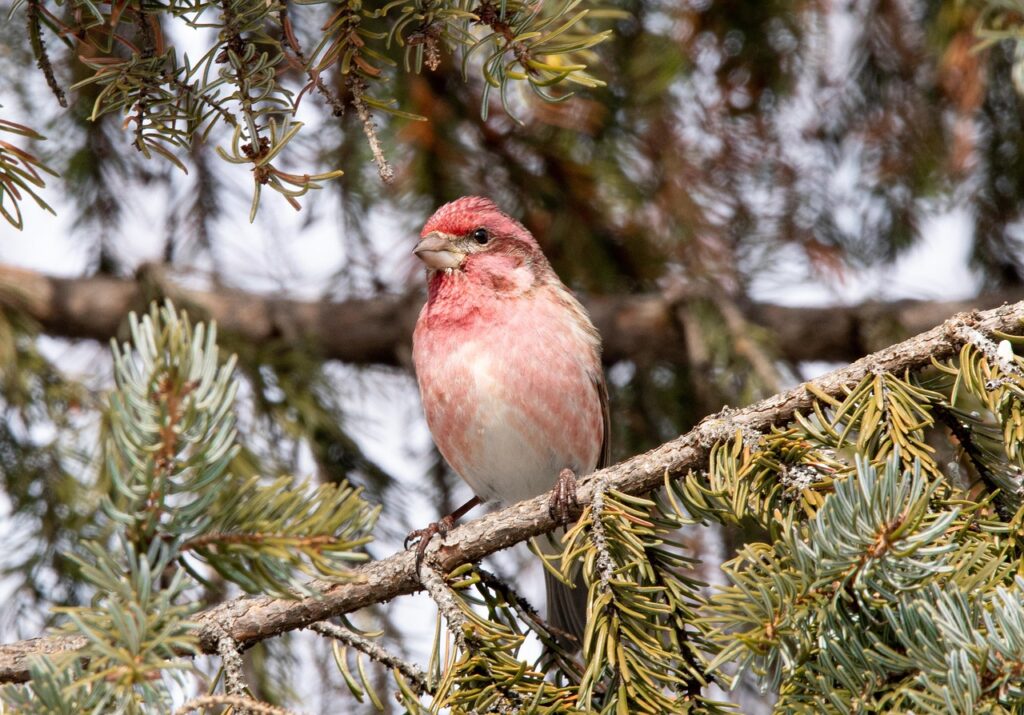
The Purple Finch, New Hampshire’s official state bird, is a beautiful visitor with a raspberry-red wash over its head and chest (in males) and a brown-streaked, sparrow-like look in females.
These birds visit New Hampshire feeders primarily from late fall through spring, though some remain year-round in the northern regions.
They love sunflower seeds and will often come in small flocks. Purple Finches prefer coniferous and mixed forests but are easily drawn into yards with well-stocked feeders.
16) Scarlet Tanager

Scarlet Tanagers, with their striking red plumage and contrasting black wings, are a vibrant addition to New Hampshire’s avian community.
You’ll find them in deciduous and mixed woodlands, especially where oaks and sugar maples thrive.
These long-distance migrators arrive in mid-May, foraging mostly in tall trees for insects.
Males dazzle with brilliant red, while females are a more subdued yellow-green.
17) Black Cap Chickadee
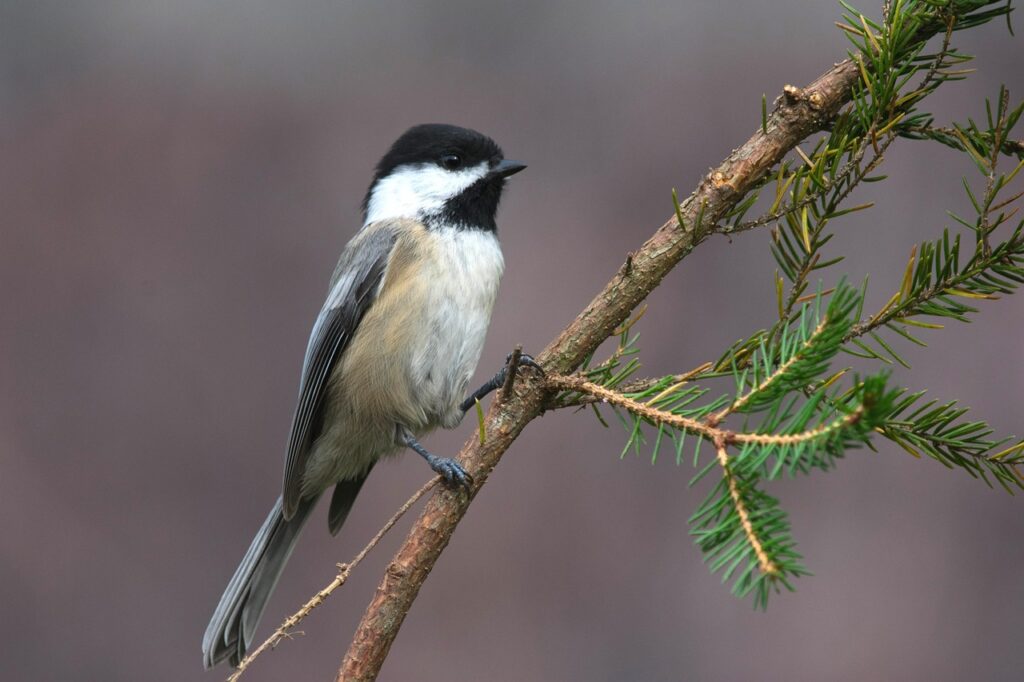
The Black-Capped Chickadee is a tiny bundle of charm with a black cap and bib, white cheeks, and soft gray wings. As one of New Hampshire’s most beloved backyard birds, it’s incredibly friendly—often bold enough to eat straight from your hand.
Chickadees are non-migratory and active all year long in New Hampshire. They’re especially lively in winter, darting between feeders and tree branches, often storing seeds for later.
These birds love suet, sunflower seeds, and peanut bits and are typically the first to investigate new feeders. If you want to attract them, offer a consistent food source and plant native shrubs for cover and nesting spots.
18) American Robin
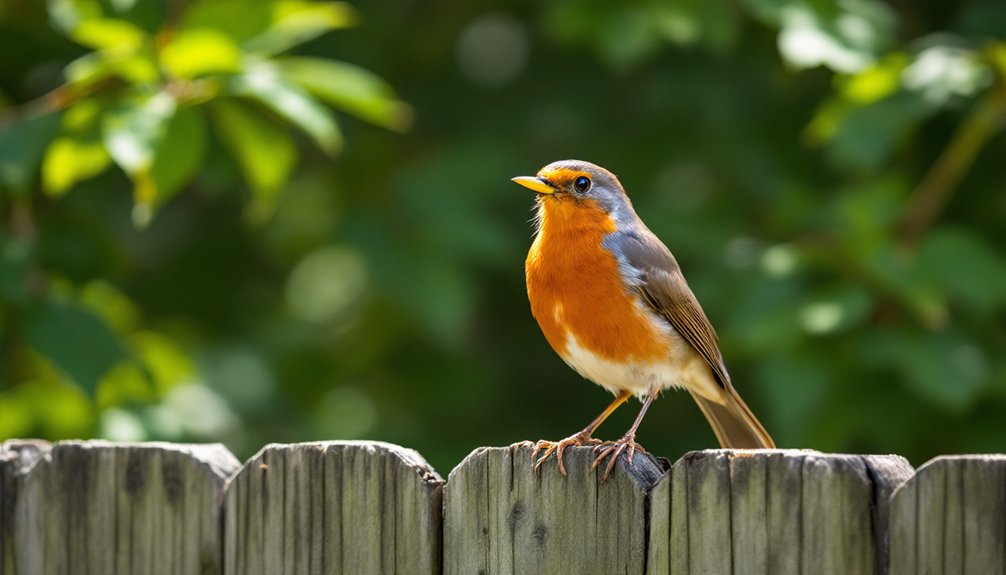
The American Robin is a familiar and widespread bird in New Hampshire, bringing a splash of color and song to the landscape.
You’ll find them in developed areas, forests, and grasslands year-round, except in Coos County and the White Mountains. They feast on earthworms, insects, and fruits, adapting their diet seasonally.
With climate change, robins breed earlier, sometimes nesting on buildings and thriving in human-modified habitats.
19) Eastern Bluebird

Although the Eastern Bluebird has faced challenges in the past, this vibrant bird is now a cherished sight in New Hampshire’s semi-open habitats.
You’ll find them in farm country, open pine woods, and suburban lawns. They thrive thanks to conservation efforts like nest boxes, which help reduce competition.
Their diet includes insects and berries, and they often travel in small flocks during winter months.
20) Spruce Grouse
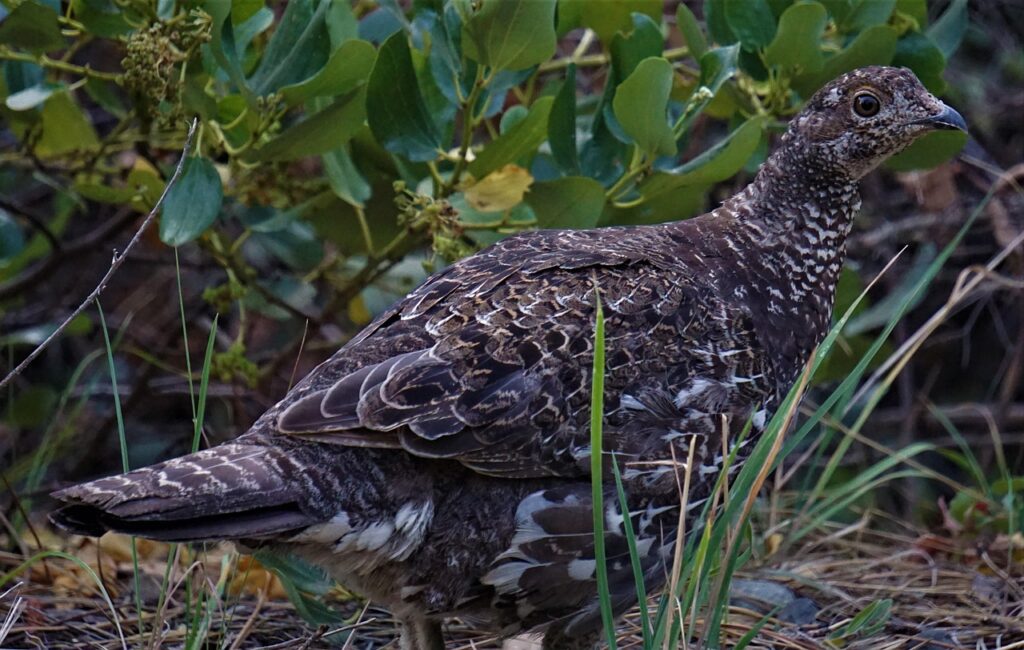
Encountering the Spruce Grouse in New Hampshire is like spotting a relic of the deep forest.
You’ll find them in dense balsam fir and red spruce forests above 3,000 feet, where they blend seamlessly with their surroundings.
Their diet consists mainly of spruce, fir, and pine needles, with a seasonal taste for blueberry plants.
Conservation efforts aim to protect their dwindling habitat against climate threats.
21) Eastern Phoebe
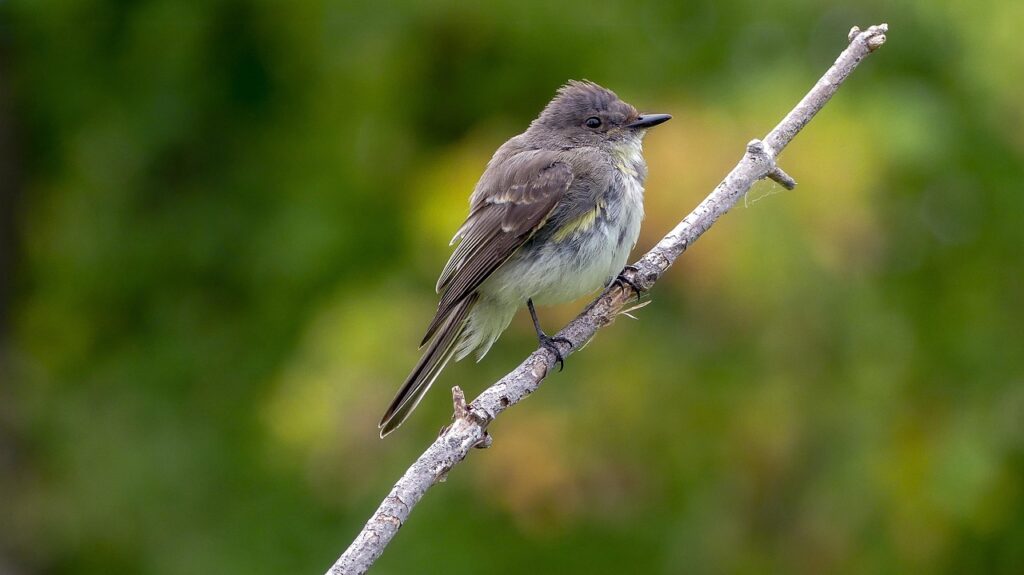
The Eastern Phoebe is a charming flycatcher known for its tail-wagging habit and soft “fee-bee” call, which it often repeats in a gentle, raspy tone.
It has a plain grayish-brown back, a pale belly, and a slightly peaked head that gives it a sweet, alert expression.
Unlike many songbirds, Eastern Phoebes are among the first to return to New Hampshire in early spring, often appearing as early as late March or April.
These birds are more active during the warmer months and migrate south for winter, so spring through early fall is the best time to see them around your backyard.
22) Ring-Necked Pheasant

The ring-necked pheasant, a strikingly colorful bird, adds a splash of vibrancy to New Hampshire’s semi-open habitats.
You’ll find them in cultivated farmland, brushy meadows, and marsh edges. These introduced birds, native to China, thrive on weed seeds, grains, and insects.
Males flaunt iridescent green heads and long tails, while females display subtle brown tones.
Despite their beauty, habitat loss threatens their populations.
23) Northern Lapwing
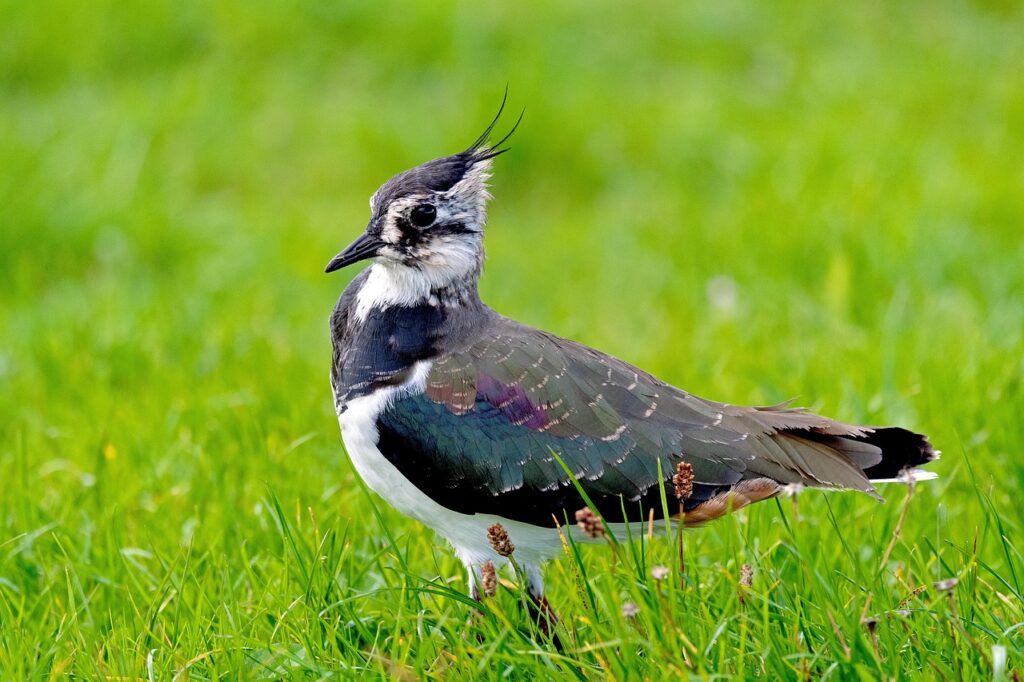
While the ring-necked pheasant dazzles with its vibrant colors, northern lapwings captivate with their unique behaviors and striking appearances.
You’ll find them in open habitats like grasslands and wetlands, where they nest in ground scrapes.
With broad, rounded wings and a distinct crest, these social birds often form large flocks in winter.
Their vocal nature includes a signature “pee-wit” call, especially during breeding season.
24) Killdeer
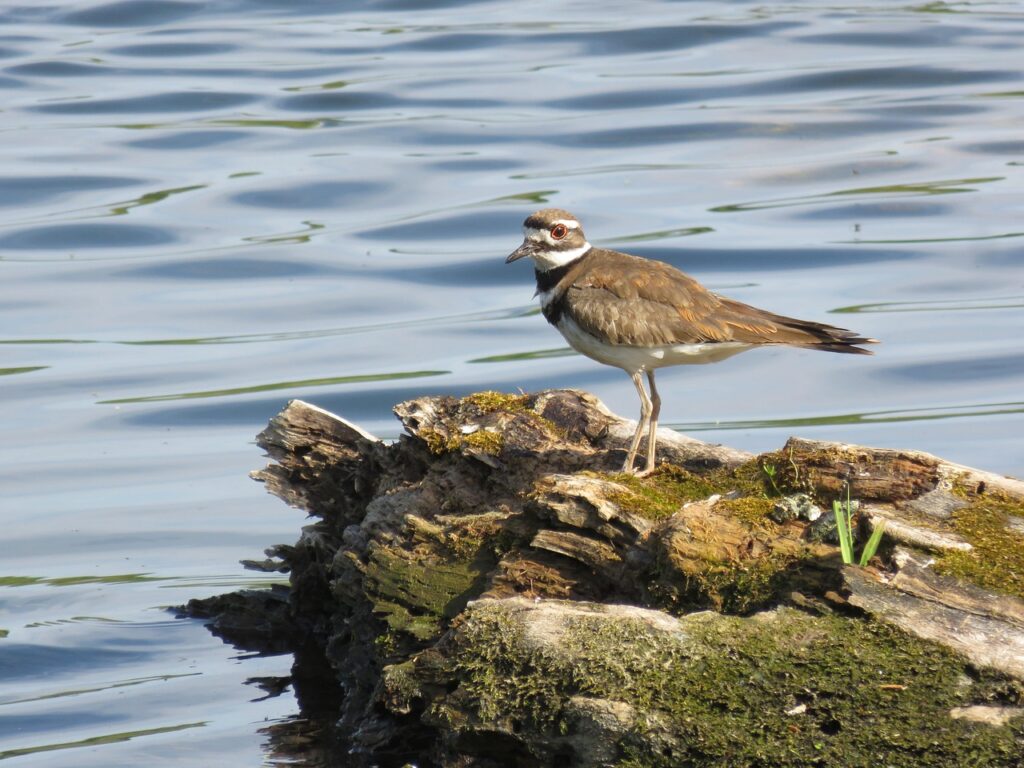
The Killdeer is a slender, long-legged shorebird often found far from the shore. It has a brown back, white belly, and two distinctive black bands across its chest. Its loud, shrill “kill-deer” call gives it its name and often alerts birders before it’s even seen.
Though typically associated with open fields and gravel areas, Killdeer sometimes wander into large backyards, especially those with open, grassy space or near water.
In New Hampshire, Killdeer arrive in early spring and stay through the summer breeding season. They’re most active during the day, often seen running in short bursts, pausing, then darting again as they forage for insects.
- 24 Popular Backyard Birds In New Hampshire (With Pictures!) - March 24, 2025
- How to Attract Birds to a Window Feeder? (6 Expert Tips) - March 16, 2025
- How to Provide Water for Birds in Summer? (4 Easy Ways) - March 16, 2025


